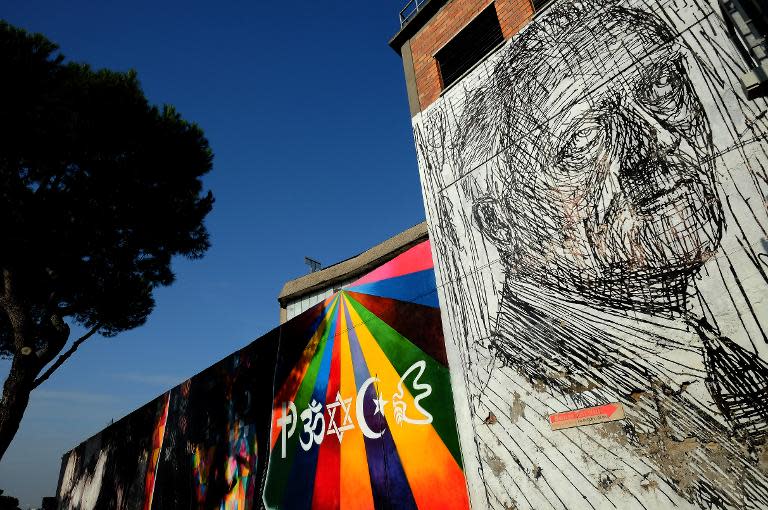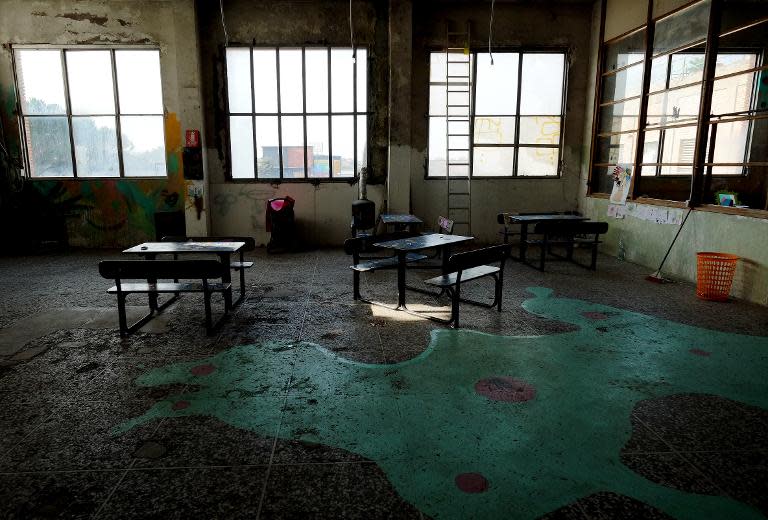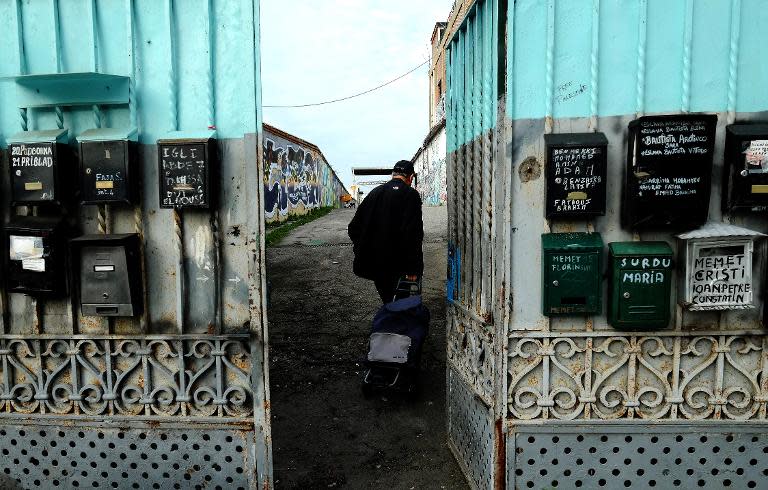Art finds its edge on Italy's social faultlines
In a part of Rome few tourists ever reach, the Metropoliz Museum of the Other and the Elsewhere (MAAM) takes the concept of the warehouse gallery into a new dimension. Located in an abandoned salami factory on the Italian capital's scruffy eastern periphery, the museum is also home to 200 squatters, including 50 children, whose precarious situation is an integral part of a project described by its creator, Giorgio de Finis, as a living, breathing artwork. "The police could come in tomorrow and throw everybody out," de Finis told AFP. "We have to be prudent. That why we only open to the public on certain days (usually Saturdays) and for special events." Despite the irregular hours, the museum is becoming increasingly recognised as an innovative element of Rome's otherwise recession-fatigued art scene. From November 28-December 6, it hosts "Iron and Fire", an exhibition of Paolo Buggiani, a contemporary of Andy Warhol who was part of New York's Pop and Street art scenes in the 1970s and 80s, and now specialises in incorporating live flames into sculpture-based performance pieces. - On the frontline - Culturally, physically and socially, MAAM stands on the frontline of Italy's overlapping immigration and housing crises. Its inhabitants come from all over. Many are Roma, an ethnic group whose herding into squalid, overcrowded camps in Italy has been subject to international criticism. And just down the road lies Tor Sapienza, a rundown neighbourhood where angry residents this month laid violent siege to a refuge for asylum seekers. De Finis's vision is based on the encounter between artists and residents and their joint creation of an alternative to the broken model of society represented by events in Tor Sapienza. The concept has become reality with help from hundreds of creatives, ranging from recent graduate Andrea Rinaldi, 27, to established figures like Buggiani, 81, all of them working for free. - Yoda inspiration - "As soon as a single euro changed hands, the whole thing would collapse," said de Finis. An anthropologist and film-maker with a whimsical passion for outer space, de Finis draws inspiration from Yoda, the Jedi warrior-philosopher of "Star Wars" fame who once advised: "Do or not do: there is no try." "At the moment it is a story without an ending," de Finis said. "I can see three possible outcomes: the owners send in the bailiffs and shut the whole thing down, they decide to embrace what we have created and take ownership of it, or it all just falls apart of its own accord," he said. Hopefully, he argues, the first option is a receding possibility because the authorities would hesitate to destroy a cultural project capable of drawing up to 1,000 members of the Rome art crowd out of the city for special events. "The art is a way of giving the place a sort of skin that perhaps will protect it from a forced eviction." - Midas touch - Occupied first in 2009 by BPM, a radical housing campaign group, after it was sold by the relocating salami makers to a construction company, the building that houses MAAM has a crumbly feel to it. But that fragility has also contributed to the cohesion of the whole space as the artists have patched up rough edges, incorporating remnants of the site's previous function or taking inspiration from it. A disused elevator has been given a gold veneer by visual artist Michele Welke in a nod to both the transformative, Midas touch of art and the role of money in social elevation. Cages of the kind once used for livestock also feature: German artist Susanne Kessler has donated an installation originally inspired by Guantanamo prison that she felt could make a different point about the treatment of migrants in the MAAM setting. Another room, once used for stripping carcasses, is now home to a giant mural by Spanish painters Pablo Mesa Capella and Gonzalo Orquin. Entitled E-MAAMCIPAZIONE, it features a series of pigs strung up but concludes with two joyously scampering to freedom. "We don't have the money to do a complete architectural renovation of the building so we have to work with what we've got," said De Finis, glancing down at the rubble that litters a still-to-be-renovated residential section of the main building. The sections completed include a courtyard vegetable garden and a nursery where volunteer teachers provide educational support for the residents' children three afternoons a week. Resident Mustapha Labiki, originally from Morocco, says the interaction with the artists has been enriching. "This place attracts all kinds of people. There is always something going on, someone to talk to and that helps the older kids stay off the streets." Sara Bautista, from Peru, says there is another advantage to life in a customised, art-filled squat. "We share recipes and you don't get your neighbours complaining that your cooking is making a disgusting smell!"





